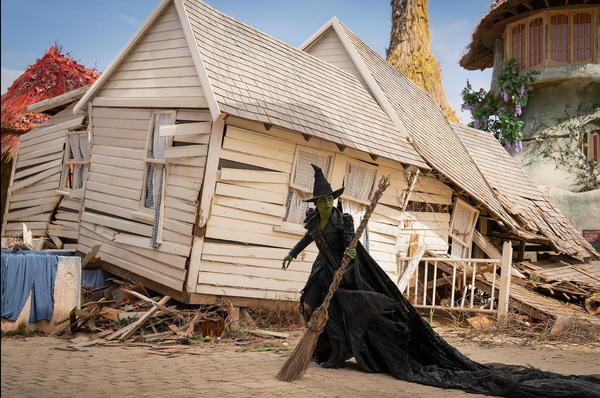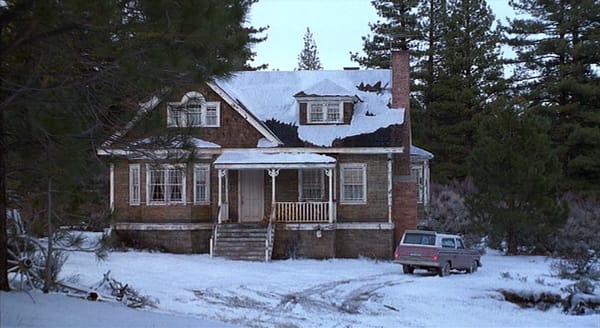Episodes: The Simpsons and cutaway gags
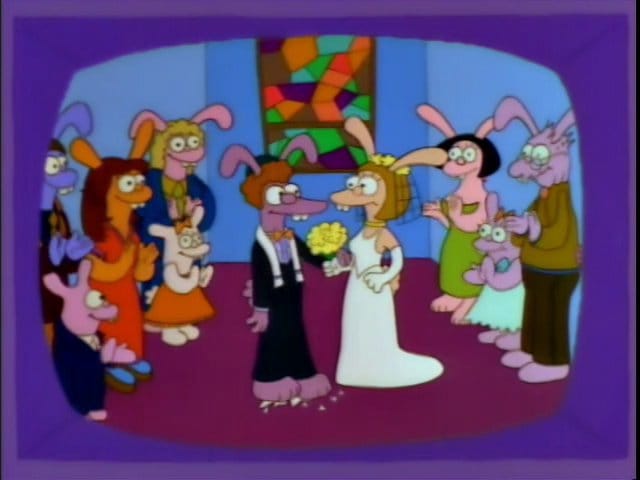
(Fluffy Bunny's Guide to You Know What? Technically not a cutaway gag!)
Like many of you, I'm sure, I spent much of the long weekend watching the Every Simpsons Ever marathon (which has now ticked over into season 10 and reached the point where the series suddenly realized it was going to have to run for decades to come, instead of wrapping everything up gracefully at the end of season 11 or so). I hadn't seen many of the earliest episodes in several years, and while I could probably write a full week of Simpsons posts -- and maybe I will! -- I wanted to talk a bit about something The Simpsons is well known for: the cutaway gag.
You know a cutaway gag. One of the characters says, "Remember that time you [X]," where [X] is either something outrageous or something that sounds mundane but can become outrageous through depiction. The most famous abuser of cutaway gags is Family Guy, which has essentially run the format into the ground, but 30 Rock, which was initially meant to be a sort of live-action Simpsons, used them all over the place. That's, of course, because The Simpsons more or less invented cutaway gags. Other shows had used them, of course, but The Simpsons used the freedom of animation to open itself up to wilder and wilder cutaways.
I'm going to let you in on a little secret now: The Simpsons barely uses cutaway gags.
Oh, sure, they're there, especially the later you get in the show's run. But in the first several seasons -- roughly through season 11 -- they're barely there. And if they are, they almost always relate directly to the story.
Here's an example from "Homer at the Bat," the classic episode where Mr. Burns recruits a bunch of baseball player ringers to help the Springfield Nuclear Power Plant softball team win the city championship (against Shelbyville, which is apparently part of Springfield now, but I digress). At one point, Mr. Burns says that Ozzie Smith has completely disappeared from the face of the Earth. The viewer saw just a couple of scenes earlier that Ozzie went to the Springfield Mystery Spot, then seemingly fell into a bottomless pit, so we don't really need to see where he is, but the show cuts to his whereabouts anyway, which is how we get this:
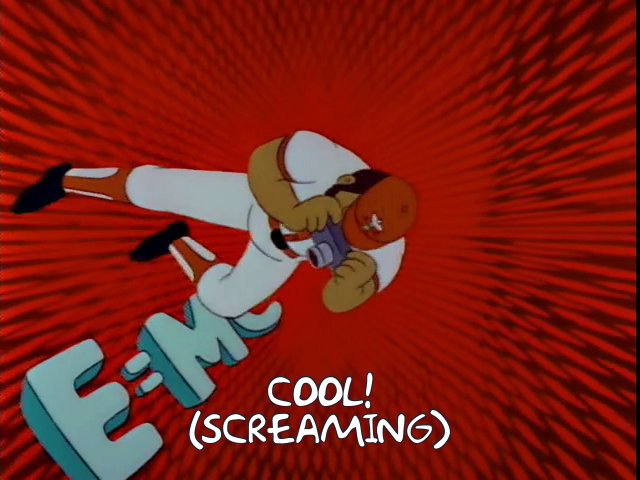
Again, this is a cutaway gag, because it's a random bit of weirdness that doesn't need to be there for the episode to work. But it's funny, and it answers an earlier question raised by the plot in amusing fashion. So while it's a cutaway gag, it's one that directly ties back to the matter at hand.
What The Simpsons does more than anything is suggest cutaway gags. The constant runner about Homer's lifelong dream (to eat the world's largest hoagie, to run onto a baseball field naked, to own the Dallas Cowboys, etc.) never is accompanied by a cutaway to Homer imagining himself doing this. Instead, we get a quick glimpse of when he actually accomplished it via a still photo (as with the hoagie), or the episode just moves on because it's going to pay that joke off later (as with the Cowboys). And yet because of how vivid these images are in your mind, you come to imagine you watched 20 seconds of Homer chowing down on a sandwich, when the still photo was 10 times funnier.
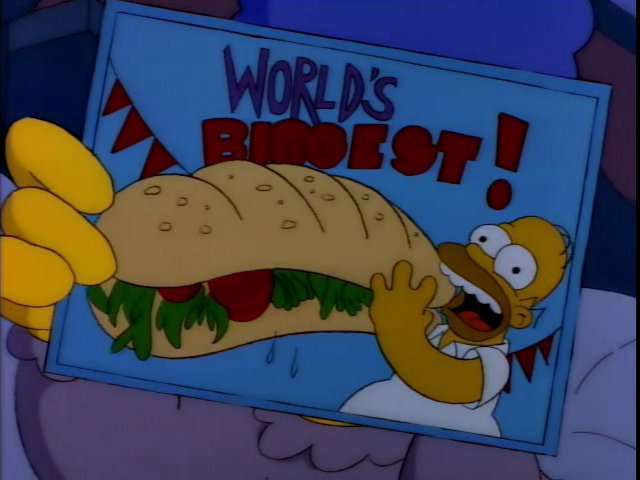
If you start to pay attention, this "suggested cutaway" thing is everywhere in The Simpsons, even in the David Mirkin years (seasons five and six, mostly), which are the height of the show's productive weirdness -- in that the stories it told were still relatively grounded, but they could also send Homer into space or whatever without feeling like the show was being broken. (Compare this to, say, the season 11 revelation that jockeys are a race of subterranean elves, and you'll see what I mean.)
The suggested cutaways are maybe The Simpsons' smartest trick, because they make the whole world of the show seem weirder than it is, while allowing it to continue telling relatively grounded, realistic stories. We think of this as a big, goofy show where anything can happen, and it sometimes is. But most weeks, it's a small show about a family and their friends and how they try to keep their relationships together. The Simpsons, thus, feels like a show where anything can happen, while simultaneously being a show where not just anything can happen, outside of a Treehouse of Horror or other non-canon episode.
When Family Guy first debuted, I didn't love the show, but I also didn't quite understand why so many critics thought it was such a step below The Simpsons. But its use of cutaway gags suggests just how the show never rose to the level of The Simpsons at its best -- or even The Simpsons at its most mediocre. There, every joke is underlined and spelled out and highlighted in bright yellow, over and over again, rather than simply suggesting something strange on the edges of the show. It's the difference between having confidence in your audience and... not having confidence in them (to put it kindly).
I have a little theory that most great TV animated shows could work just as well as radio plays. Certainly great animation can help, but TV budgets are still too modest to allow for consistently great animation. (There are exceptions. I would say Adventure Time is one. But this is mostly true.) Visual style helps, and visual gags can be hilarious. But sometimes, all you need is the suggestion of something much funnier that happened at one time, and that will carry the day.
(Thanks to Frinkiac for the images and for being a force for good in the world.)
--
Episodes is published three-ish times per week, and more if I feel like it. It is mostly about television, except when it's not. Suggest topics for future installments via email or on Twitter. Read more of my work at Vox Dot Com.



